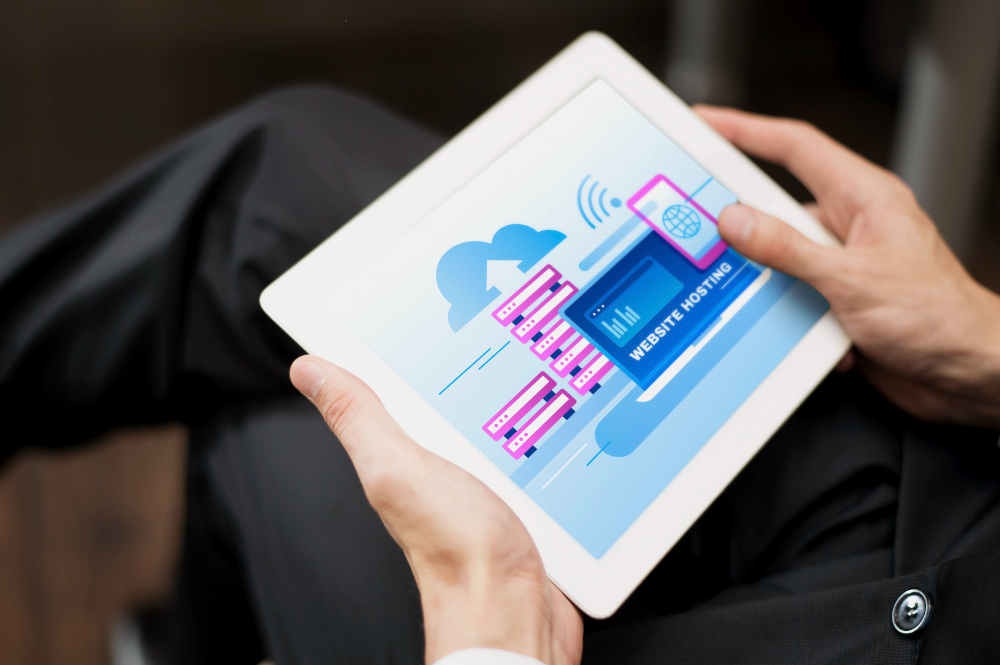With the rise in demand for fast and seamless money transfers, peer-to-peer (P2P) payment apps have become essential in the fintech world. Apps like Venmo, PayPal, and Zelle offer users the ability to send and receive money instantly with a few taps. However, if you’re considering entering the P2P payment app market, understanding the development costs is critical. In this article, we’ll explore the cost breakdown involved in P2P payment app development and what you can expect at each stage of the process.
Factors Influencing the Cost of P2P Payment App Development
Before we dive into specific cost areas, it’s important to know the primary factors that impact the overall development expense:
- App Complexity: The more features you include, the higher the cost.
- Platforms (iOS, Android, or Both): Developing for one platform costs less than creating a cross-platform app.
- Third-Party Integrations: APIs for payment processing, security, and banking services add to the cost.
- Security Requirements: As a financial app, security is paramount, but strong security measures add to development costs.
- Development Team: The choice between hiring a freelancer, in-house team, or outsourcing development will affect the price.
- Location of Developers: Developer rates differ by region. Developers from the U.S. or Western Europe will cost significantly more than those in Eastern Europe or Asia.
Cost Breakdown of P2P Payment App Development
1. Market Research and Analysis
Before starting development, conducting market research is essential to understand your target audience, competition, and the features users expect. This phase typically includes competitive analysis, user research, and creating user personas.
- Cost Range: $5,000 to $15,000
- Duration: 2 to 4 weeks
2. UI/UX Design
Designing a user-friendly and intuitive interface is key to the success of a P2P payment app. Users expect a smooth, aesthetically pleasing, and straightforward experience. The design process includes wireframing, prototyping, and final design.
- Cost Range: $10,000 to $30,000
- Duration: 4 to 8 weeks
This cost covers designing the interface for different platforms (iOS, Android, web), ensuring the app is easy to navigate, and incorporating features such as dashboards, transaction history, and notifications.
3. Core Features Development
The actual coding and development of the app are usually the most expensive phase. The core features of a P2P payment app include:
- User Registration and Authentication: Secure logins through email, social media, or phone number verification.
- Money Transfers: Instant transfers between users, linked to their bank accounts or credit cards.
- Transaction History: Allowing users to view their payment history, with filters to view details.
- Bank Account/Card Linking: Securely connecting user bank accounts to the app.
- Notifications: Push notifications to alert users of successful transfers or issues.
Each of these core features requires integration with payment gateways, banking systems, and secure databases.
- Cost Range: $50,000 to $100,000 (depending on complexity and platform)
- Duration: 3 to 6 months
4. Advanced Features Development
Beyond the core functionalities, advanced features can significantly increase the development cost, but they’re essential to stand out from the competition. These advanced features include:
- Multi-Currency Support: If you plan to expand internationally, supporting multiple currencies is crucial.
- QR Code Payments: Many P2P apps allow users to transfer money by scanning QR codes.
- In-App Chat: Offering users a way to communicate and confirm transactions in-app adds a social layer.
- Splitting Bills: This feature allows users to divide payments among a group of people.
- Recurring Payments: For regular transfers, like rent or subscriptions, recurring payments are useful.
- Cost Range: $20,000 to $50,000 (depending on features)
- Duration: 2 to 4 months
5. Backend Development
Backend development is responsible for handling the app’s data, ensuring users can register, process payments, and store transaction histories securely. This stage also includes setting up APIs, payment gateways, and databases to handle the large volume of transactions securely.
- Cost Range: $40,000 to $100,000
- Duration: 4 to 6 months
6. Security and Compliance
Given that a P2P payment app deals with sensitive financial data, stringent security measures are necessary to protect users and comply with regulations. Essential security features include:
- Data Encryption: Ensuring all financial transactions and personal data are encrypted.
- Multi-Factor Authentication (MFA): Adding an extra layer of security for user logins.
- PCI DSS Compliance: Ensuring your app complies with Payment Card Industry Data Security Standard (PCI DSS) regulations.
- Fraud Detection and Prevention: Implementing systems to detect and block fraudulent transactions.
Security features are one of the most crucial parts of P2P payment app development, but they also add significantly to the cost.
- Cost Range: $20,000 to $50,000
- Duration: 3 to 6 months
7. Testing and Quality Assurance (QA)
Once the app is developed, thorough testing is required to ensure that everything functions as intended. Testing includes checking for bugs, performance issues, security vulnerabilities, and ensuring the app works smoothly across different devices and platforms.
Testing should cover:
- Functional testing
- Performance testing
- Security testing
- Usability testing
- Cost Range: $15,000 to $30,000
- Duration: 4 to 6 weeks
8. Deployment and Launch
After testing, the app needs to be deployed on the appropriate platforms (iOS and Android). Additionally, setting up cloud hosting, servers, and databases are part of the deployment costs. You may also incur costs related to submitting your app to the App Store or Google Play.
- Cost Range: $5,000 to $10,000
- Duration: 1 to 2 weeks
9. Post-Launch Maintenance and Support
The development process doesn’t end with the launch. Post-launch maintenance is required to ensure smooth operation, add new features, and address any bugs that arise over time. Regular updates are necessary to enhance the user experience and meet evolving security standards.
- Cost Range: $10,000 to $50,000 per year
- Duration: Ongoing
Total Cost Estimation for P2P Payment App Development
Based on the breakdown above, here’s a rough estimation of the total cost for P2P payment app development:
- Basic App with Core Features: $80,000 to $150,000
- Mid-Level App with Core and Advanced Features: $150,000 to $300,000
- Complex App with Full Features and Security: $300,000 to $500,000+
Keep in mind that these are estimates, and the actual cost will vary depending on factors such as the location of the development team, project complexity, and the specific requirements of your app.
Conclusion
Building a P2P payment app is a significant investment, but it can provide substantial returns if executed well. By understanding the costs involved and the steps required to bring your app to life, you can better plan your budget and timelines. From initial research to post-launch maintenance, each phase of P2P payment app development comes with its own set of costs and challenges. With careful planning, the right technology stack, and a focus on security, you can create a competitive and successful app in the rapidly growing digital payments market.
Misamo Enterprise PVC Wall Hooks, Pack of 15, Transparent
₹189.00 (as of 20 November, 2024 18:31 GMT +05:30 - More infoProduct prices and availability are accurate as of the date/time indicated and are subject to change. Any price and availability information displayed on [relevant Amazon Site(s), as applicable] at the time of purchase will apply to the purchase of this product.)Pigeon Polypropylene Mini Handy and Compact Chopper with 3 Blades for Effortlessly Chopping Vegetables and Fruits for Your Kitchen (12420, Green, 400 ml)
₹189.00 (as of 20 November, 2024 18:31 GMT +05:30 - More infoProduct prices and availability are accurate as of the date/time indicated and are subject to change. Any price and availability information displayed on [relevant Amazon Site(s), as applicable] at the time of purchase will apply to the purchase of this product.)2 Pcs Kitchen Mats, Waterproof Memory Foam Kitchen Rugs, Standing Desk Mat Floor Mats, Comfort Runner Rug Carpets for Kitchen Floor, Sink (c)
₹549.00 (as of 21 November, 2024 18:32 GMT +05:30 - More infoProduct prices and availability are accurate as of the date/time indicated and are subject to change. Any price and availability information displayed on [relevant Amazon Site(s), as applicable] at the time of purchase will apply to the purchase of this product.)Coway Airmega Aim Professional Air Purifier For Home, New Launch, Longest Filter Life 8500 Hrs, Traps 99.99% Virus & Pm 0.1 Particles, Manufacturer Warranty Of 7 Years - White
₹9,999.00 (as of 20 November, 2024 18:31 GMT +05:30 - More infoProduct prices and availability are accurate as of the date/time indicated and are subject to change. Any price and availability information displayed on [relevant Amazon Site(s), as applicable] at the time of purchase will apply to the purchase of this product.)Bajaj Immersion 1500 Watts Water Heater Rod | Nickel Plated Heating| Copper | ISI Certified | 2 Years Warranty | Silver
₹599.00 (as of 20 November, 2024 18:31 GMT +05:30 - More infoProduct prices and availability are accurate as of the date/time indicated and are subject to change. Any price and availability information displayed on [relevant Amazon Site(s), as applicable] at the time of purchase will apply to the purchase of this product.)Discover more from The General Post
Subscribe to get the latest posts sent to your email.





